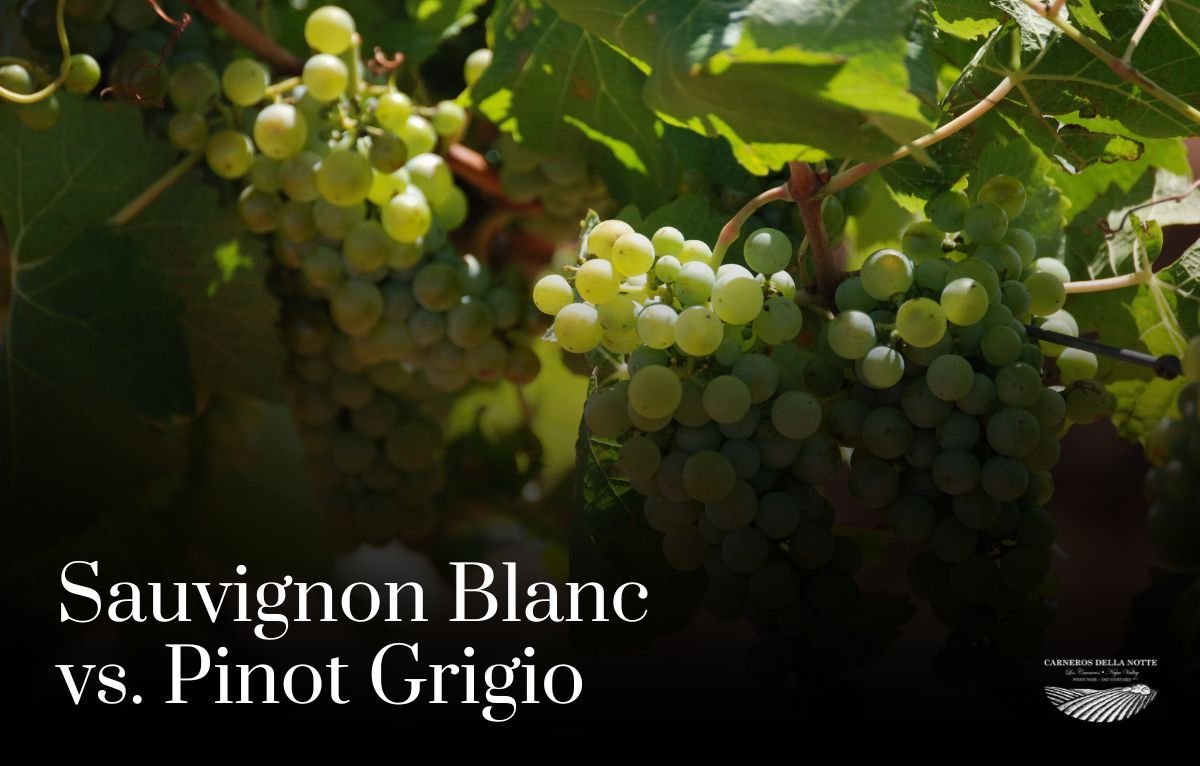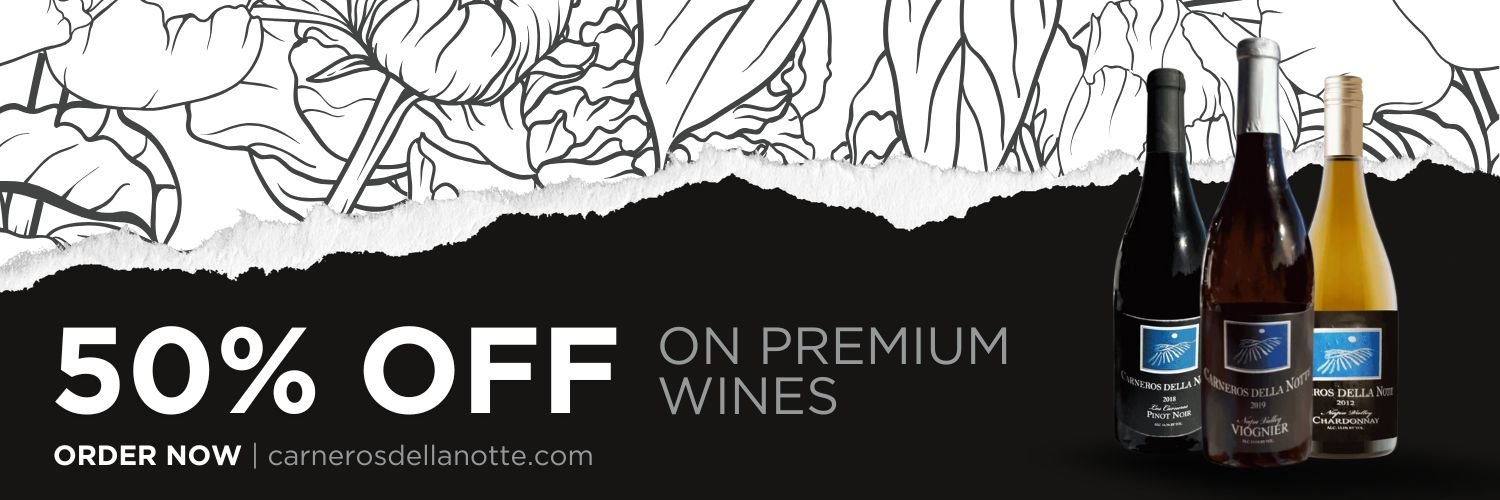If you are just beginning your journey into the world...
Read MoreWhen wine lovers find themselves comparing sauvignon blanc vs pinot grigio, they are stepping into a fascinating story of heritage, geography, and taste.
These two varieties have captured the hearts of drinkers across the globe, yet each carries its own history and cultural identity.
Understanding their origins and how regional influences shape their flavor helps us appreciate every sip.
We will now explore the story of both wines, how they differ, and why they remain two of the most celebrated whites on the table.
Roots of Sauvignon Blanc
Sauvignon Blanc traces its lineage to the Loire Valley of France, with Sancerre and Pouilly-Fumé among its most renowned expressions.
Its name comes from the French words for “wild” (sauvage) and “vine” (vigne), signaling its ancient connection to nature.
Over the centuries, this grape has traveled far beyond France, finding a second home in New Zealand, Chile, South Africa, and California.
Climate plays a defining role in its style. Cooler areas deliver Sauvignon Blanc with piercing citrus, herbal notes, and vibrant acidity.
Warmer regions soften these edges, offering tropical fruit tones and rounder textures. This adaptability has made the grape a world traveler, capable of reflecting the personality of its terroir.
In many regions, Sauvignon Blanc is also crafted in different winemaking approaches, which expand its versatility.
Some producers lean toward stainless steel fermentation, preserving crispness and aromatics. Others experiment with oak aging, which softens acidity and adds creaminess.
The result is a wine that can be as zesty as freshly cut lime or as layered as ripe passionfruit with a hint of spice.
Italian Character of Pinot Grigio
Pinot Grigio, on the other hand, comes from a lineage tied to Pinot Noir, its darker-skinned relative.
Most famously grown in Northern Italy, particularly in regions like Veneto, Alto Adige, and Friuli, it thrives in cool alpine breezes that maintain its crisp, refreshing character.
The Italian approach to Pinot Grigio has defined its international identity: pale in color, light-bodied, and delicately flavored.
The style is deliberately crafted for drinkability, meant to complement food rather than dominate it.
Beyond Italy, Pinot Grigio also appears in Alsace, Oregon, and California, where winemakers experiment with fuller, more textured expressions.
Interestingly, Pinot Grigio has two very different personalities depending on its origin. The Italian version is typically straightforward and clean, with a focus on balance.
By contrast, Alsatian or Oregonian versions often take on more richness, showing flavors of honey, spice, or stone fruit.
This duality demonstrates the grape’s flexibility, even though it is often celebrated for its simplicity.
Heritage Meets Flavor in the Glass
When comparing sauvignon blanc vs pinot grigio, history translates into taste. Sauvignon Blanc, with its French roots and global spread, often leans into green apple, gooseberry, and citrus flavors.
Pinot Grigio, shaped by Italian traditions, emphasizes restraint, bringing flavors of pear, lemon, and almond into focus.
The difference is also felt in body and finish. Sauvignon Blanc tends to carry sharper acidity, making it zesty and refreshing, while Pinot Grigio offers a softer, more subtle experience.
This distinction stems directly from the philosophy of winemaking cultures: French and New World regions champion bold, expressive fruit, while Italian winemakers value harmony and lightness.
For many wine lovers, this means Sauvignon Blanc is the wine of choice when boldness is desired, while Pinot Grigio appeals when the goal is a gentle companion to food and conversation.
Each has a place, and each thrives when appreciated for its unique personality.
Tradition on the Table
Pairing these wines with cuisine further highlights their cultural character.
- Sauvignon Blanc: Excellent with goat cheese, oysters, and green vegetables such as asparagus. Its bright acidity cuts through richness and enhances herbal dishes.
- Pinot Grigio: A natural match with seafood pasta, grilled white fish, and simple salads. Its gentle flavor complements dishes without overpowering them.
In France, Sauvignon Blanc has long been a partner to local cheeses, particularly goat cheese from the Loire Valley. In Italy, Pinot Grigio finds its match in coastal cuisine—fresh clams, shrimp, and light pasta dishes.
These pairings are not accidental; they reflect centuries of local winemakers and cooks evolving together, shaping traditions that still influence dining today.
Climate’s Hand in Style
Regions define wine. In Napa Valley, Sauvignon Blanc benefits from warm days and cool nights, allowing a balance of ripeness and freshness.
In contrast, Pinot Grigio’s Italian home relies on mountain breezes and limestone soils that encourage a light, crisp style.
When grown outside their birthplaces, these grapes adapt. In California, Pinot Grigio often gains a touch more weight and fruit character compared to its European versions.
Similarly, Sauvignon Blanc from New Zealand takes on bold tropical notes unlike its French ancestors.
This adaptability is part of why the conversation around sauvignon blanc vs pinot grigio remains so intriguing: every region gives them a new voice.
Climate also determines how these wines age. Most Pinot Grigio is best enjoyed young, within a year or two of release, to preserve its freshness.
Some Sauvignon Blancs, however, particularly those aged in oak or blended with Sémillon, can gain complexity over several years. This longevity highlights the stylistic range of Sauvignon Blanc compared to Pinot Grigio’s youthful charm.
Why These Wines Endure
Both varietals have endured centuries of change in the wine world because they remain approachable, versatile, and expressive of their terroir.
Sauvignon Blanc thrives in global vineyards because it showcases climate with clarity. Pinot Grigio continues to charm because it offers lightness and ease that suits everyday dining.
Another reason for their endurance is their accessibility. For new wine drinkers, they serve as inviting introductions to the world of wine, while experienced palates appreciate their nuance.
Few wines manage to occupy this balance, making them staples on restaurant menus and in home cellars alike.
Their heritage has created wines that are instantly recognizable yet always evolving. The balance of tradition and reinvention is what makes them timeless.
From Heritage to Your Glass
Exploring the story of sauvignon blanc vs pinot grigio reveals how culture, geography, and winemaking philosophy shape every glass.
One reflects French origins and global diversity, while the other carries an Italian simplicity that has made it a household name. At Carneros della Notte in Napa, our approach honors this balance of history and craft, creating wines that capture the spirit of our region.
For those who appreciate both heritage and innovation, Carneros remains a destination where the beauty of wine comes vividly to life.
Latest blog & articles
Chardonnay for Beginners: A Friendly Guide to This Popular White Wine
Chardonnay wine stands as a pillar of sophistication in the...
Read MoreWhat Does Pinot Noir Taste Like?
If you’ve ever wondered what does Pinot Noir taste like,...
Read More





